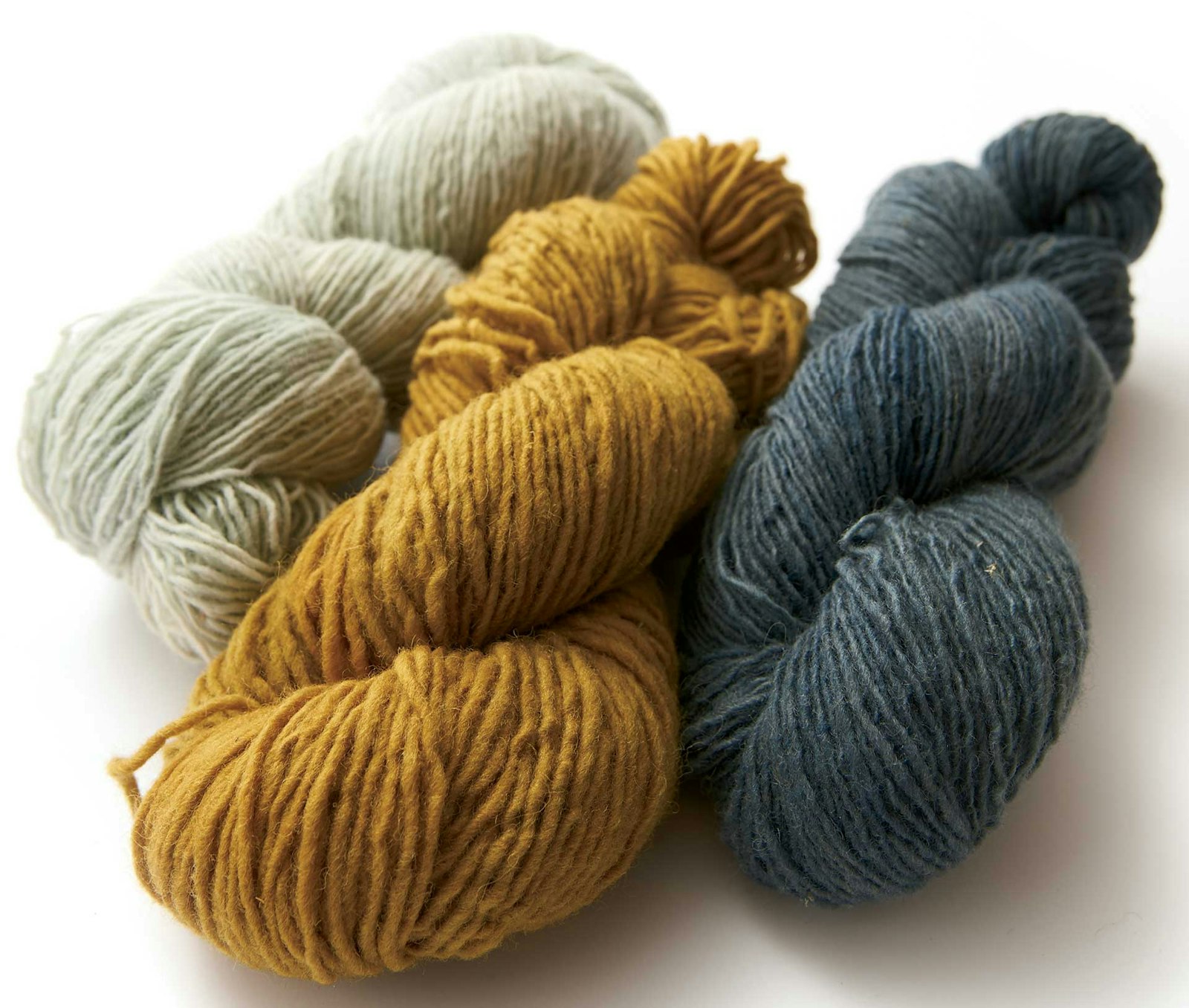In our January/February 2021 issue of Handwoven, an article I worked on about Niklye Begay, a Diné shephard of Navajo-Churro sheep, got me wondering about weaving with Churro. I looked for and found this Yarn Lab from 2015. Please note that Rio Grande Yarns is no longer in business. A new source for Churro is Taos Wools founded by Joe Barry one of the former co-owners of Rio Grande Yarns.- Susan
Diné (Navajo), Hispanic, and tapestry weavers throughout New Mexico have prized Churro wool for centuries. Rugged Churro sheep produce long-staple wool suitable for the strong, functional, and beautiful pieces traditional to the Southwest. As a rule, Churro yarn is available hand-dyed in small batches. The care taken in processing and dyeing this yarn is part of its allure, and the Rio Grande Churro Yarns of Weaving Southwest are no exception.
Medium Weight Churro
The Yarn: Rio Grande Yarns Medium Weight Churro, 4 ounces, 170 yards, 100% Virgin New Mexico Churro Wool
This singles yarn begs to be fondled and squished. It comes in five natural and twenty-three hand-dyed colors. The hand-dyed colors have a variegated quality that creates stunning depth and character. The long staple makes it very strong. It can be pulled apart with bare hands, but it takes a strong pull. The yarn feels soft, though not quite soft enough for wearing against the skin. The weight is traditional for rugs, blankets, and weft-faced tapestries.
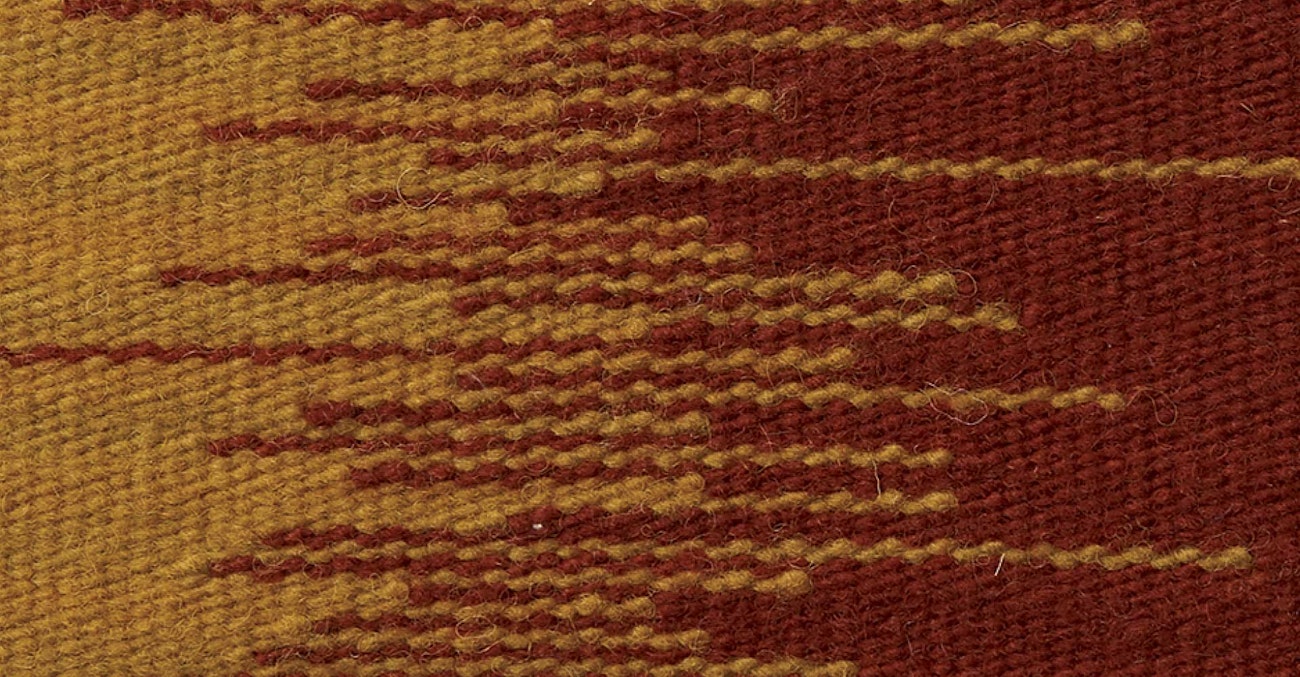
Medium Weight Churro in weft-faced tapestry.
Weft-Faced Tapestry
Sample Yarns: Rio Grande Yarns Medium Weight Churro (Amber and Jasper), Rio Grande Yarns, 2-ply Worsted Wool Warp.
This is a good sett for a wall hanging. After weaving, the sample was steam-pressed instead of wet-finished. For a heavier rug, 3-ply worsted wool warp at 6 ends per inch (epi) would make a more hard-packed and durable weaving. Variations show themselves well in the blocks of weft color and add depth to the sample.
Sett: 8 epi
Dimensions: Width on the loom: 8"; width off the loom: 7.75"; width after steam pressing: 7.75"; draw-in and shrinkage: 3%. Woven length: 6.25"; length after steam pressing: 6.25"; take-up and shrinkage: negligible.
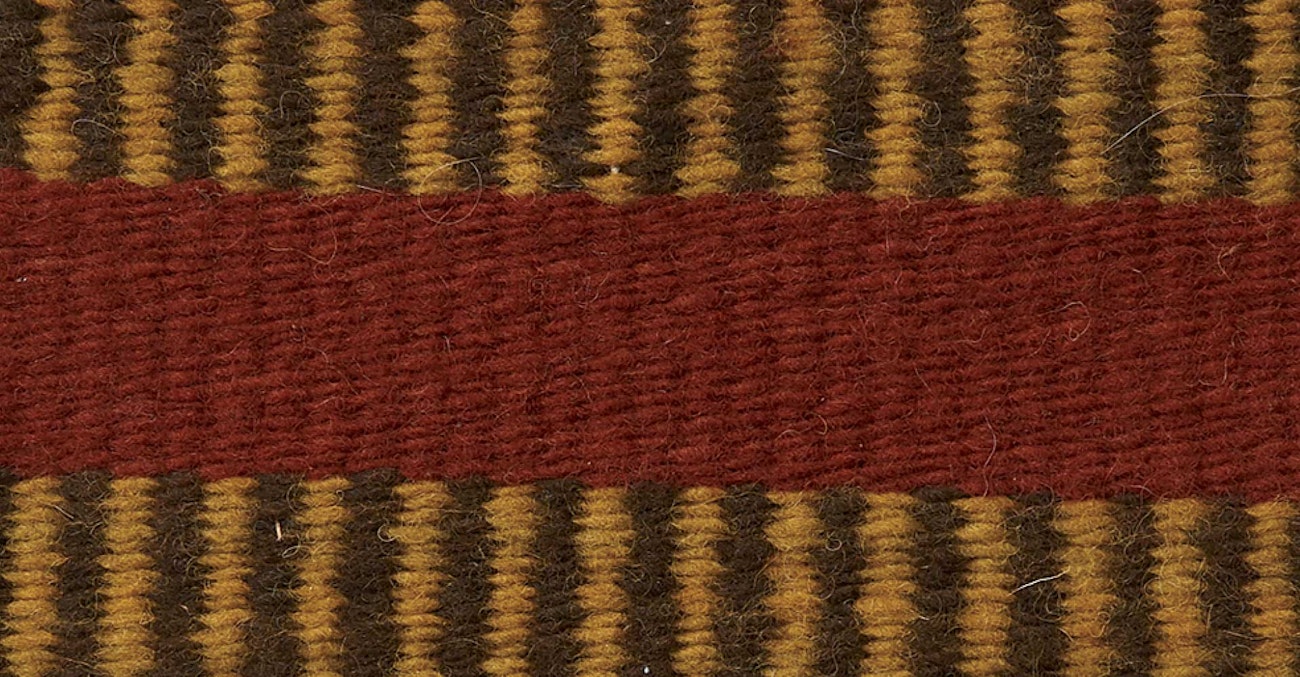
Medium Weight Churro in doubleweave.
Doubleweave/Saddle Blanket Weave
Sample Yarns: Rio Grande Yarns Medium Weight Churro (Coffee, Amber, Jasper), Rio Grande Yarns 2-ply Worsted Wool Warp.
I do not believe there could be a finer yarn available for weaving functional saddle blankets. The strength, softness, and sheen of the Churro yarns make weavings like this extremely durable and beautiful. As with the previous sample, this one was steam-pressed instead of wet-finished.
Sett: 8 epi
Dimensions: Width on the loom: 8"; width off the loom: 7.6"; width after steam pressing: 7.6”; draw-in and shrinkage: 5%. Woven length: 6.2"; length after steam pressing: 6.2"; take-up and shrinkage: negligible.
Chica
The Yarn: Rio Grande Yarns Chica, 4 ounces, 430 yards, 100% Virgin New Mexico Churro
This yarn is a finer version of the medium-weight Churro and also comes in both natural and hand-dyed colors. The yarn is perfect for fine weft-faced tapestry weaving, although because it is so strong, it can also be used for warp to create nice fabrics. The yarn is especially appropriate for lightweight blankets and outerwear clothing.
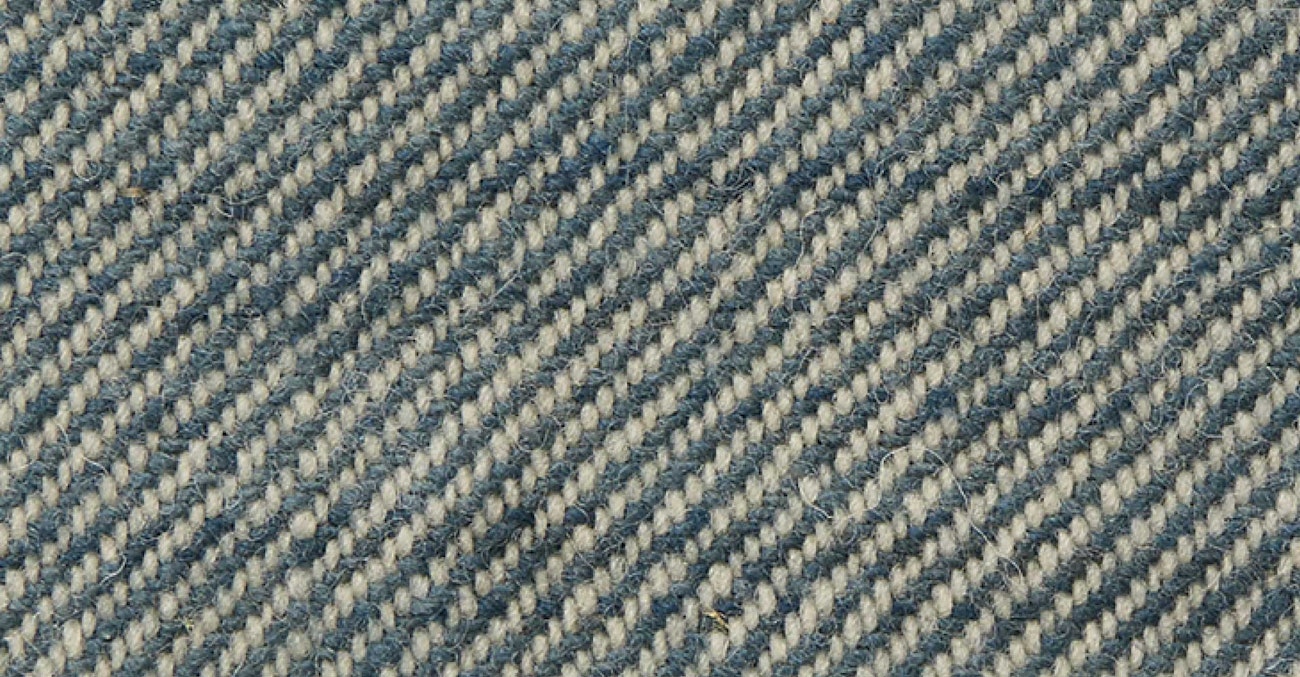
Chica Slate B and Slate D in 2/2/ twill.
2/2 Twill
Sample Yarns: Rio Grande Yarns Chica (Slate B and Slate D).
This sample has fabulous drape. It would make a great lightweight blanket, or fabric for a coat or vest. It is very soft after wet-finishing, almost soft enough to wear against the skin, but not quite. This sample sticks to a 1-2-3-4 threading, as does most traditional New Mexican weaving.
Sett: 6 epi
Dimensions: Width on the loom: 8"; width off the loom: 7.75"; width after wet-finishing: 7.5"; draw-in and shrinkage: 6.25%. Woven length: 7.5"; length after wet-finishing: 7.375"; take-up and shrinkage: 1.7%.
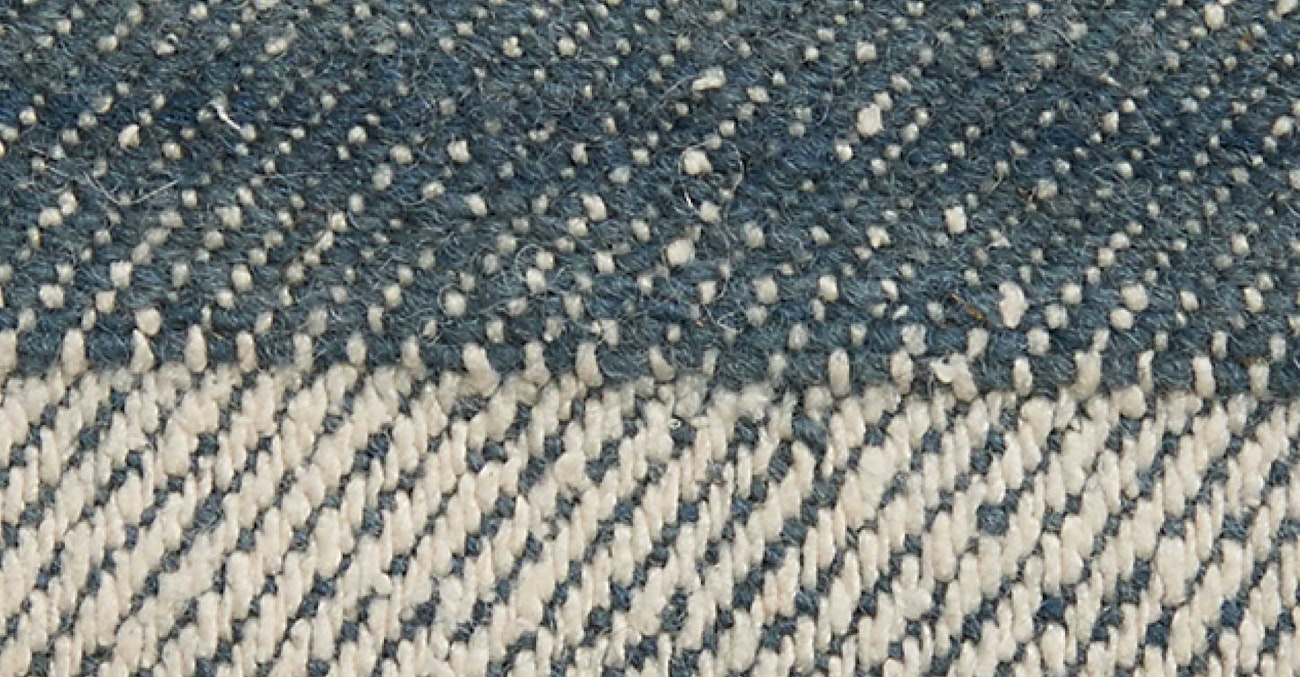
Chica and singles silk in 1/3 twill.
1/3 Twill
Sample Yarns: Rio Grande Yarns Chica, medium-fine silk singles.
I was inspired by the 2/2 twill sample to try creating a cloth that could be worn next to the skin. I found some silk yarn in my stash and decided to try this unlikely combo. The 1/3 twill makes a fabric that shows mostly warp on one side and mostly weft on the other. I think the silk side is indeed soft enough to be worn next to the skin. I wove the sample thinking it would be a good weave for a shawl, but the finished feel is a bit too dense, almost like thick, blue jeans material. It seems to me that it would make a great shirt (silk side in).
Sett: 32 epi
Dimensions: Width on the loom: 4.375"; width off the loom: 4.375"; width after wet-finishing: 4.375"; draw-in and shrinkage: neglibible. Woven length: 6.5"; length after wet-finishing: 6.25"; take-up and shrinkage: 3.8%.
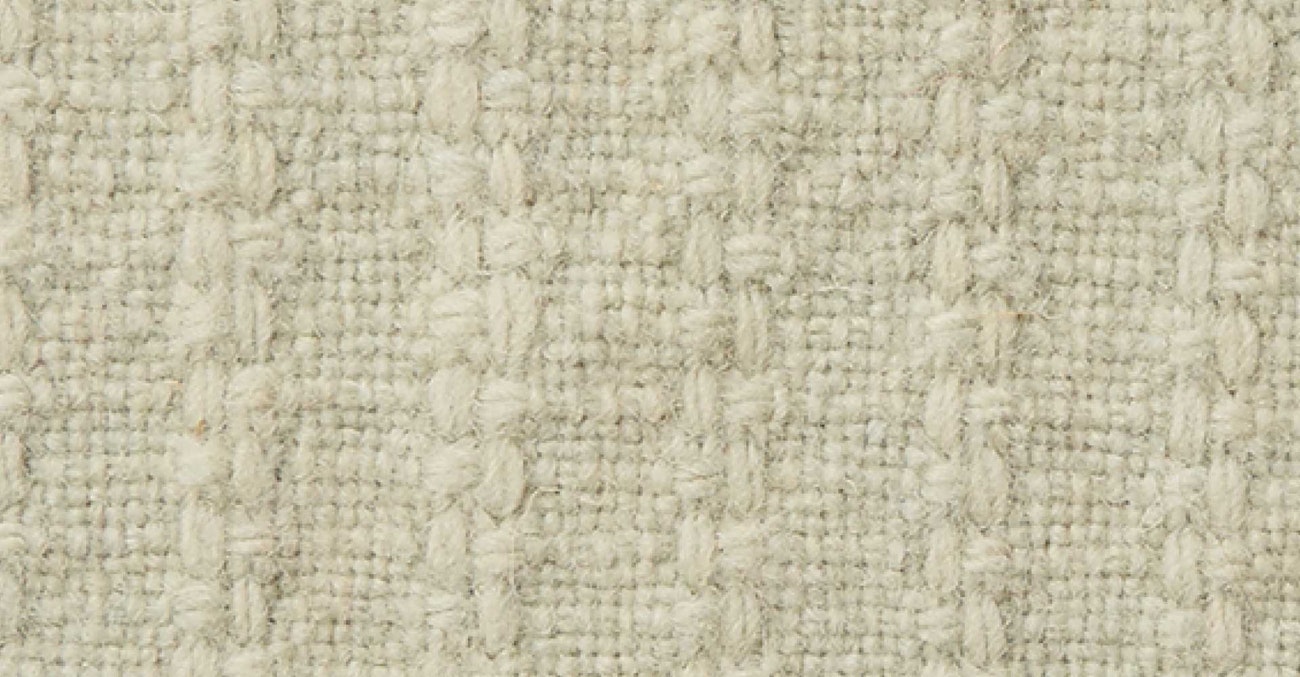
Chica Slate D in monk’s cloth.
Monk’s Cloth
Sample Yarns: Rio Grande Yarns Chica (Slate D).
This is the only sample I made that strays from the traditional 1-2-3-4 threading. Still experimenting with Churro cloth, I wanted to try a nontraditional structure for New Mexico. This cloth is very soft after wet-finishing, and the color variations in the yarn are subtle but apparent. It has great drape similar to the 2/2 twill. It would make a good cloth for a lightweight blanket or outerwear clothing.
Sett: 20 epi
Dimensions: Width on the loom: 6.5"; width off the loom: 6.375"; width after wet-finishing: 6.25"; draw-in and shrinkage: 3.85%. Woven length: 5.75"; length after wet-finishing: 5.625"; take-up and shrinkage: 2.2%.
Conclusions
Deeply rooted in functionality, the Southwestern weaving tradition usually sticks to a 1-2-3-4 or 1-2 threading pattern. In this structurally simple weaving style, yarn is expected to speak for itself. Churro is more than up to the task with its great luster and long staple. The fiber is very strong, and does not pill over time. I was pleased to discover with these weaving experiments that the finer-weight Churro makes such beautiful cloth. The fine Chica Churro seems like a natural fit for weaving monk’s cloth, although it is certainly not a traditional use for this yarn. Traditions often have much to gain from each other!

